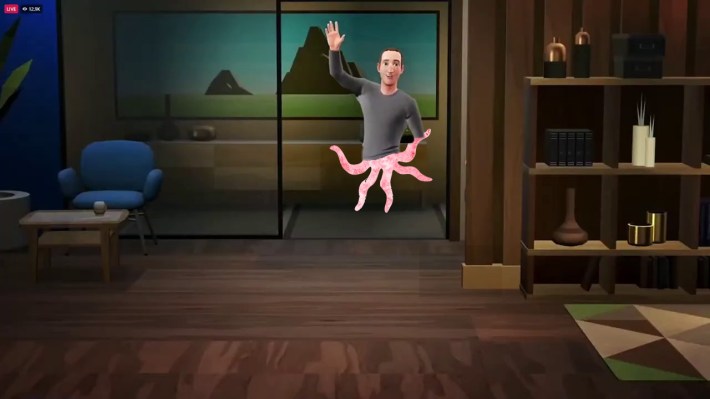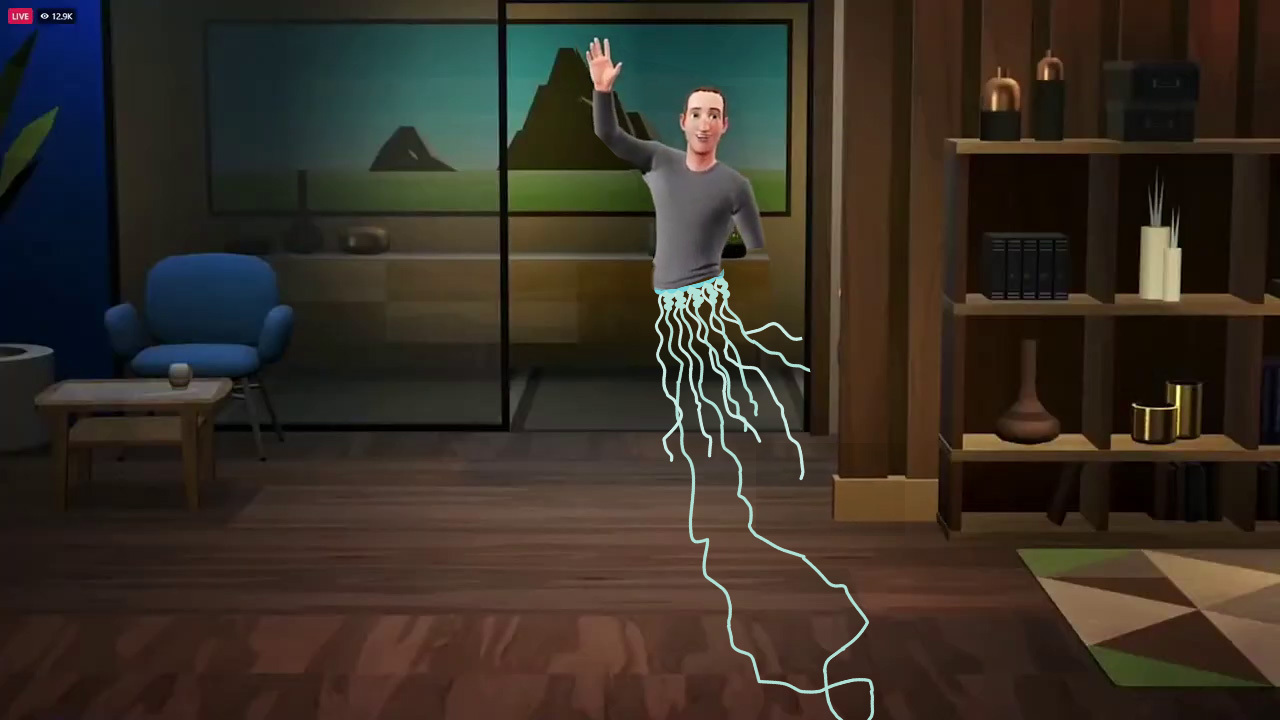On Tuesday, hundreds of millions of years after our ancestors took their first wobbly steps out of the sea and on to dry land and irrevocably altered the trajectory of life on Earth, the company formerly known as The Facebook, tweeted "legs," irrevocably altering the trajectory of online discourse. A few hours later, tweeting from the account of Horizon Worlds, the virtual reality game that cost billions of dollars to make and which no one wants to use, Meta clarified:
Legs are coming soon! Are you excited? 🎉 pic.twitter.com/SB6qSepKm4
— Meta Horizon (@MetaHorizon) October 11, 2022
If the smattering of confetti-generating torsos in the audience are to be believed, then the introduction of legs to the metaverse appeared to be cause for celebration. Although the question posed by the tweet—are you excited?—did not appear particularly interested in any of our answers, I would like to state for the record that the legs do not excite me. They disappoint me.
Maybe if Meta had tweeted, specifically, that "human legs are coming soon," my expectations would have been more reasonable. But you cannot promise me "legs" and then expect me to be excited when the only options are human ones.
Let me be clear. Legs make an enormous amount of sense, evolutionarily speaking. Millions of years ago, as early hominids evolved the ability to walk upright, our legs evolved with us. We evolved strong knee joints to support our weight on one leg at a time. We evolved curved spines to absorb shock as we strode across the plains. Our legs allowed us to travel long distances, forage from low-lying branches and hold things in our arms, like fruits or babies. Our legs also gave us some less attractive sensations, such as back pain, but there are trade-offs to everything.
This evolutionary path makes far less sense in the metaverse, a virtual reality space where, theoretically, everything should be possible, including the options for the bottom halves of our bodies (hereinafter referred to as "bottoms"). After many people have spent the last few years seeing only the heads and torsos of their coworkers, friends, and families via videoconferencing, I'd wager there's never been a better time to get creative about our bottoms—perhaps switching them frequently and at will, like Mx. Potato Head.
Some alternatives are obvious and firmly rooted in existing myth and fantasy. Centaurs have horse bottoms. Mermaids have fish bottoms. Mr. Tumnus has a goat bottom, and Ursula has an octopus bottom. Jabba the Hutt had a slug bottom, along with, arguably, a slug top.
The actual history of Earth provides even weirder options. Maybe I could leap as many as 30 times my body length with the help of a gall midge larvae bottom. Or I could haunt everyone I meet with my bigfin squid bottom, with arms and tentacles trailing 20 times the length of my body behind me. If we had a meeting "outside," I could perch on the ground with bony fins as long as yardsticks with my tripod fish bottom to ensure no virtual mud stained my virtual pants. But if I had to choose the the bottom of any creature that ever lived, I would want the bottom of Hallucigenia, a tubular little guy with a blobby, balloon-like head and 10 pairs of limbs: seven legs that clearly made for walking, and three stubby and clawless limbs that may have functioned like sensory antennae or groping tentacles, as Ed Yong described them for National Geographic. Imagine the two of us meeting in the metaverse, me holding (or tasting!) a cup of coffee with one of my mysterious and unclawed appendages and you, perhaps, rolling alongside me with the prickly spines of a sea urchin bottom, which also happen to be holding your many virtual papers and documents, because the grand vision of the metaverse appears to be replicating the banal trappings of modern office life deep in the pit of the uncanny valley.
Would a sea urchin and Hallucigenia be able to stroll side-by-side in the real world? Never! Although they would have both been at home on the seafloor, they were separated by hundreds of millions of years. Their unlikely companionship would only be possible in a place outside of time and space and the elements, a place that probably ticks many of the same boxes as the metaverse.
But something like this, by which I mean creativity and joy, will never exist in the metaverse. Because the metaverse is not supposed to be fun, or delightful, or contain any vestige of human pleasure. It is supposed to replace work. The wildest dream of the metaverse is an avatar that can tuck its imminent legs under a virtual conference table, or walk to a virtual Keurig machine to make a shitty cup of shitty virtual coffee (K-Cups will also not be recyclable in the metaverse). This might be the saddest thing about Horizon Worlds: Tasked with building a different world, one that could defy the laws of physics and the limits of human imagination, Meta instead built a "game" where you can look into the dead, pixelated eyes of an unskilled digital rendering of your boss, clink virtual glasses, and toast to the idea of legs, which, as Mark keeps promising, are coming soon.







